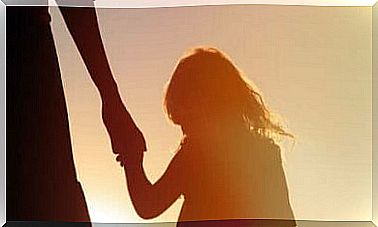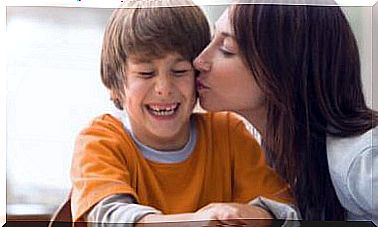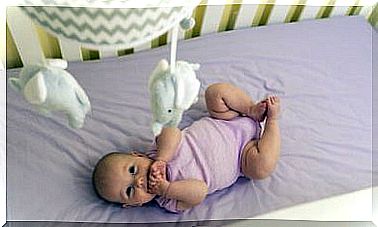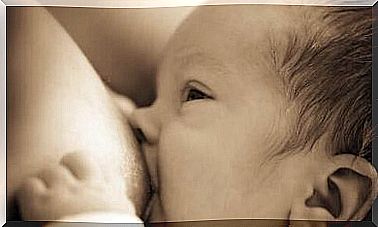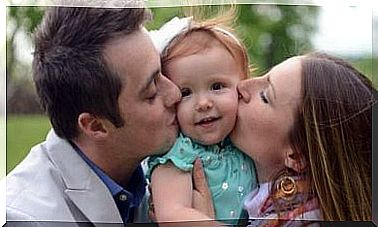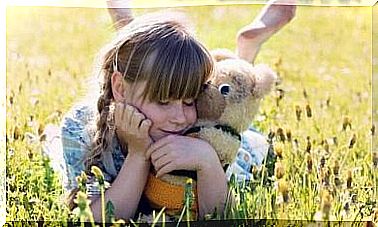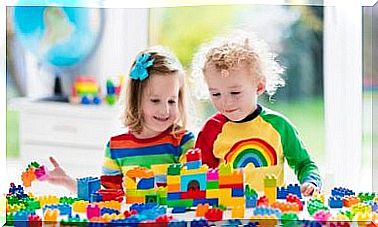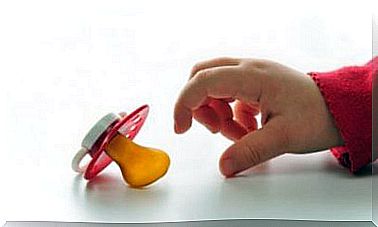How To Explain The Water Cycle To Children
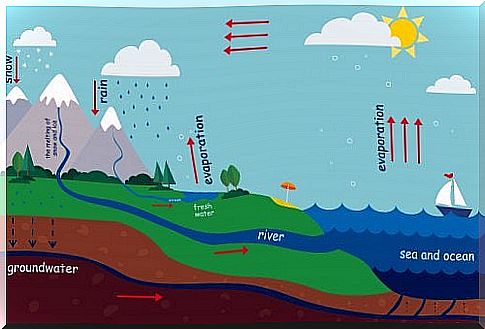
Water is an essential element for the existence of life on Earth. 75% of the earth’s surface is covered with water but only 3.5% of this amount is fresh water. Furthermore, 69% of this fresh water is found in the form of ice while the remaining 31% is found in the liquid state in rivers and underground aquifers. Water can also be found in the atmosphere, therefore in its gaseous state. Find out in this article how to explain the water cycle to children with a very interesting experiment.
What allows water to change from one state to another? We will try to answer this question in a fun way, in order to explain the water cycle to children.
What is the water cycle?
Water is a molecule made up of two hydrogen atoms H and one oxygen atom O. It has no taste, color or smell. The element of water can be in three states: liquid (the water we drink), solid (the ice cubes that cool our water when we drink) and gaseous (the water vapor found in the atmosphere).
The movement of water through its three states is what is known as the water cycle. The engine responsible for this movement is the Sun which evaporates liquid water from the sea and lakes into the atmosphere. There, with the help of gravity, wind and temperature changes, the water eventually returns to the earth’s surface in the form of rain, snow or hail.
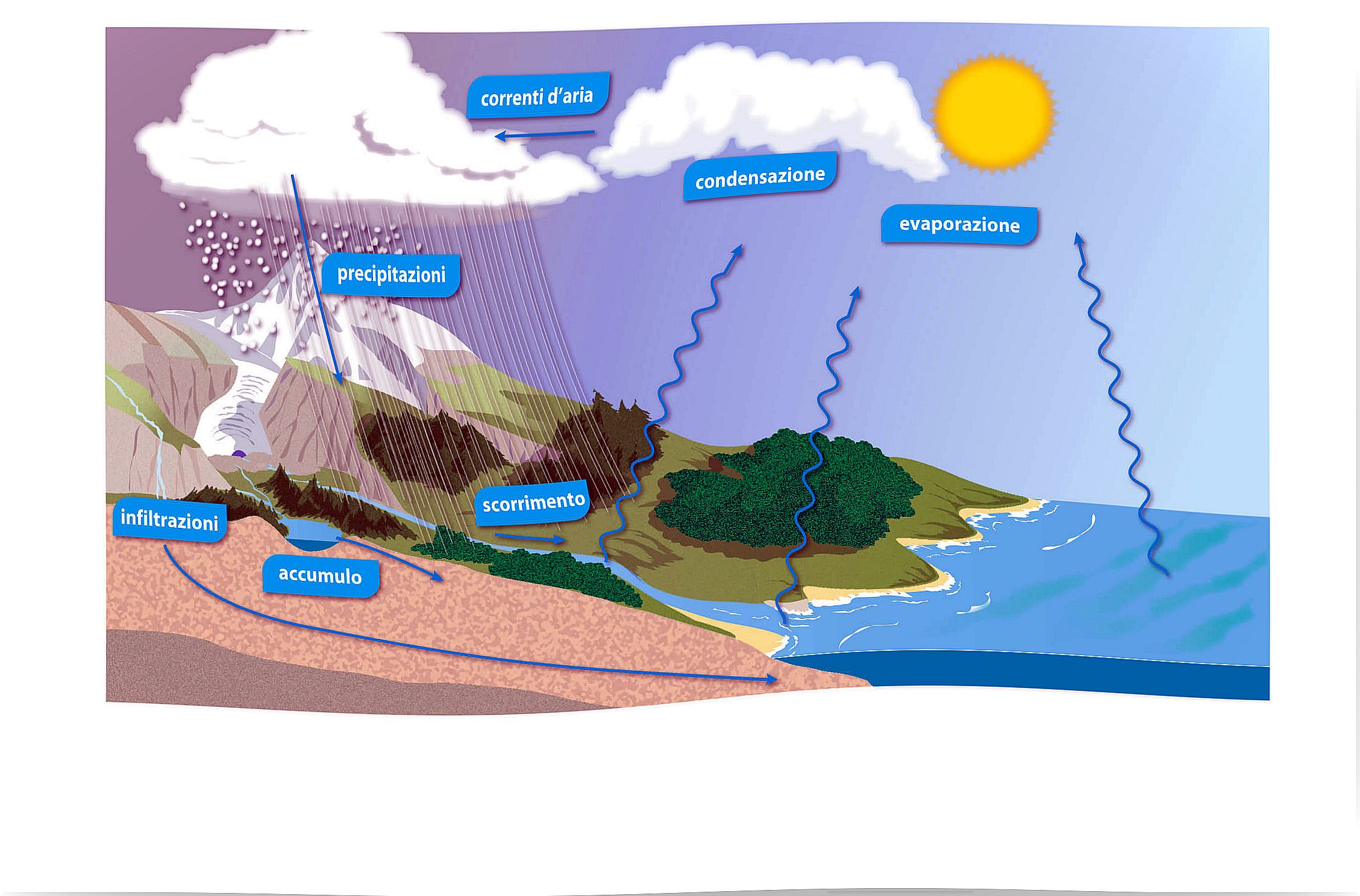
People and living beings also contribute to this cycle, using water for metabolic and physiological processes which they then expel.
Explain the water cycle to children
The hydrosphere is the set of all the water that exists in the Earth. In addition to all the liquid water of the sea, ocean, rivers… the hydrosphere is also composed of glaciers, layers of ice that cover part of the continental surface and also of ice layers that float in the oceans.
As we have said, water in the liquid state of the sea, lakes and rivers evaporates by the action of the heat that the sun produces. The particles of evaporated water rise and condense in the atmosphere. There the water vapor cools and condenses into small drops of water that form clouds.
Thanks to the wind, the clouds will be led to colder areas where precipitation of this water is produced in the form of rain, snow or hail. And it is thus finally that the water is returned to the earth. This water that has fallen, thanks to the mountains, will form rivers or, if it infiltrates underground, it will form part of the groundwater.
Experiment to explain the water cycle to children
What materials do you need for this experiment?
- Two bowls, preferably glass, otherwise you can use plastic if they are transparent.
- Food coloring.
- A teaspoon of salt.
- Transparent film.
- An Apple.
Method
- Slightly heat the water in a bowl and add the food coloring and salt. This will facilitate the dissolution of the salt in the water.
- When the salt is well dissolved, put this water in the larger transparent bowl. In the center of this place the other bowl, the smaller one.
- Close with cling film and on top, in the center, put a weight, in this case the apple. Place the bowls next to a window with the rays of the sun.
- After a while we will observe some drops of water on the inner face of the transparent film. It will be evaporated and condensed water.
- Finally apply a little pressure in the center of the film to concentrate the drops of water and make them fall into the smaller bowl.
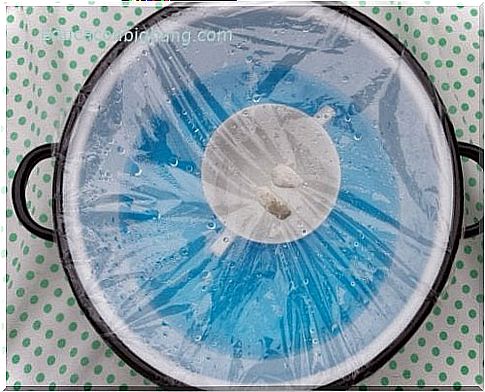
Result of the experiment to explain the water cycle to children
As it heats up, the water evaporates and when it reaches the plastic it cannot rise further, as when it reaches the atmosphere. Then it cools and drops of water that can be seen in the plastic surface begin to form. In nature this corresponds to the formation of clouds.
Finally, if you taste the water that has precipitated into the smaller vessel you will verify that it is colorless and tasteless, like rain water.
We hope that this simple experiment to explain the water cycle to children will make you have fun with them.
